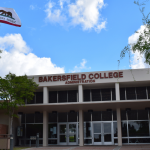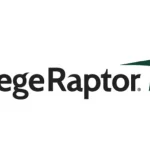Students today expect colleges and universities to accommodate their always-on, digital lifestyles. And institutions of higher education (IHEs) are seeking innovative ways to improve student retention and engagement. The thing is, these two facts are closely connected! Colleges and universities at the forefront of innovation are realizing that the path to their retention goals is through AI-powered solutions that power student retention strategies.
This quick article provides three college and university retention strategies, underpinned by modern, human-centric artificial intelligence (AI), to help higher-ed professionals boost retention rates and programs — from Enrollment to Academic Affairs, to Student Services, Financial Aid, and beyond.
Higher Education and AI
Many universities have incorporated AI-focused strategies to meet student needs more efficiently. AI-powered solutions such as two-way texting, chatbots, and live chat provide information and support 24/7 via phones and laptops.
This self-service aspect empowers and engages students. AI solutions help minimize frustrations and roadblocks on many administrative issues, such as enrollment and financial aid.
Moreover, these solutions give staff the freedom to offload repetitive tasks. More time is available to focus on harder issues and create a great college experience.
3 AI-Fueled Student Retention Strategies
Strategy 1: Take a Unified Approach to Student Engagement
Improving student life requires a unified approach to data. IHEs need visibility into timely, comprehensive information to better understand and support students. This requires consolidating data, such as academic records and extracurricular activities, from various departments and systems across campus.
A great place to start is by integrating your SIS or CRM with AI-powered communications solutions. Using this intelligence, administrators can proactively identify at-risk students and prevent student drop out.
For example, if a large group of students is missing their high school transcript in their application, an integration between two-way texting and Salesforce would allow the admissions and enrollment team to send out a text to that specific group of students. They not only notify the students of requirements, but also enable them to ask questions via their preferred texting channel.
Strategy 2: Deliver Personalized Experiences
Another benefit of the unified approach mentioned above is that it also facilitates the tailored, consistent college journey that students desire.
AI-based tools combined with holistic student data enable IHEs to provide relevant, targeted communications at the right student lifecycle stage, via preferred channels. Students get quick answers to specific questions that are customized to their specific situation.
Students who feel informed and empowered are less likely to drop out, making administrators more likely to meet retention goals.
Strategy 3: Foster Flexibility and Accessibility
Cultivating a tailored experience requires providing flexible options that accommodate students’ preferences, schedules, and unique situations. For example, 24/7 access to information is a convenience for night owls or people who work during the day.
IHEs can increase flexibility by implementing multiple communication platforms. Many students eschew email, preferring instant communication via their favorite everyday channels, such as two-way text or live chat.
In-person support remains important. Students who cannot find answers via technology can go to someone for help. In-person inquiries are usually more complex and personal, and AI solutions give staff more time to handle these interactions.
Harness the Power of AI in Your Student Retention Strategies
Leveraging these strategies will help IHEs serve students more efficiently and effectively. Students in turn will feel that their college cares about them and understands their needs. AI makes it all possible, enhancing student engagement and increasing retention to help more students graduate and build the life of their dreams.
Want to learn about about three more student retention strategies you can execute on with AI-powered student communication solutions? Get your copy of the full length eBook here!















